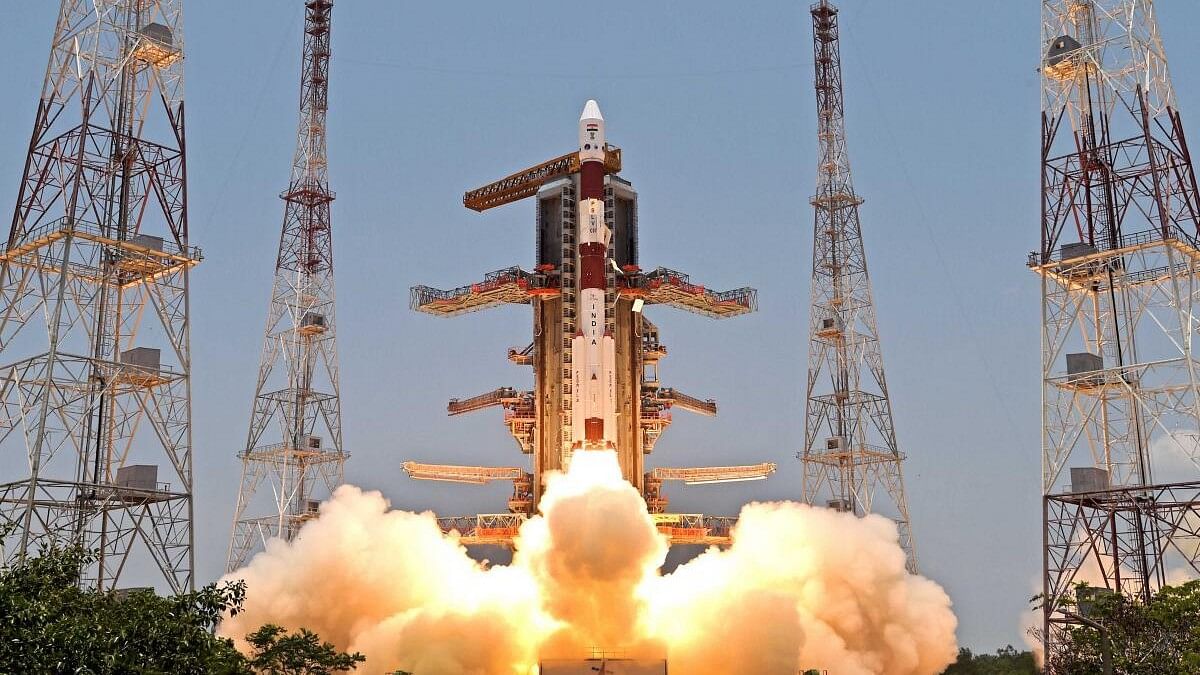
File Photo: ISRO's launch vehicle PSLV-C57 rocket carrying India's first solar mission, 'Aditya-L1', lifts off from the Satish Dhawan Space Centre, in Sriharikota, Sept. 2, 2023.
Credit: PTI
New Delhi: India’s Aditya-L1 solar probe can fill a critical knowledge gap when the life of NASA-ESA’s Solar and Heliospheric Observatory (SOHO) ends, because of its ability to carry out environmental monitoring and remote survey of the Sun simultaneously, say scientists involved in developing the payloads.
At its final parking slot, Aditya-L1 will not be alone as four other probes are already there studying the star.
Three of the Aditya-L1’s neighbours are small instruments owned by NASA and have a limited role, but the fourth one, SOHO, is a much larger observatory jointly owned by the US and European space agencies and has been operational for nearly three decades.
“In SOHO, only the coronagraphs are functioning. Its mission life has been extended by one year after which Aditya-L1 can be a good replacement because of its ability to carry out in-situ sampling of solar wind and particles and continuous unobstructed observation of the Sun,” solar physicist Dibyendu Nandi from the Indian Institute of Science, Education and Research (IISER), Kolkata, who was associated with the development of one of the payloads, told DH.
The NASA-ESA probe had three coronagraphs, of which two are functioning. They produce the corona images a bit away from the Sun. Those ranges will not be covered by the Aditya-L1’s Visible Emission Line Coronagraph (VLC), developed by the Indian Institute of Astrophysics, Bengaluru.
“SOHO captures one image in every 15 min whereas the VLC takes one in every 15 seconds, producing 5760 images each day. Also, it will produce images close to the disk of the Sun, almost from the edge of the photosphere,” said R Ramesh, principal investigator of the coronagraph at IIA.
After reaching the orbit around the L1 point, the ISRO team will carry out manoeuvres to stabilise the spacecraft and orient it towards the Sun before the VLC becomes functional, said S Annapurni, IIA director.
Another key payload is the solar ultraviolet imaging telescope (SUIT), which was the first instrument that became operational a month ago as the space probe was on its way to the Sun, capturing the full disk images of the Sun in such wavelengths for the first time.
“They show the intricate details of features in the lower and middle solar atmosphere. The data taken by SUIT will open a new window for solar atmospheric studies and help us understand solar activity in greater detail,” said Durgesh Tripathi, a senior scientist at the Inter-University Centre for Astronomy and Astrophysics, Pune, which developed the telescope.
Scientists point out that Aditya-L1 will focus predominantly on the solar atmosphere whereas SOHO has instruments to study its interior as well.
Over the next five years, Aditya-L1 is expected to improve human understanding of the Sun, providing important clues to the mysteries associated with the star, and help improve space weather prediction.
“It will seek to find out why the corona is hotter than the lower atmosphere, study the magnetic properties of various solar phenomenon and find out how to improve the space weather forecasting,” noted Dipankar Banerjee, Director, Aryabhatta Research Institute of Observational Sciences, Nainital. “
Aditya provides a complete package at L1,” added Nandi.
